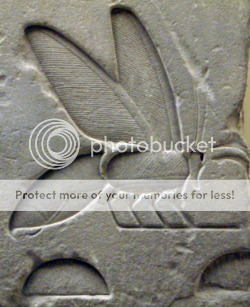How Echinacea Herb Helps Household Pets

The Echinacea plant is considered one of nature's most effective antibiotics. This homeopathic herb does wonders for reducing fevers and ensuring that abrasions do not become infected. What caught the eye of German researchers was the plant's ability to reduce illnesses like a cold and influenza. What researchers discovered was impressive. This plant naturally contains flavonoids, oils, polysaccharides, phenols, alkylamides, copper, iron, iodine, potassium, vitamins A, C, and E, in such a way that each component enhances the other. This research is outstanding news for people who suffer from allergies, colds, and those who are prone to influenza. In addition to helping people, this plant is a great benefit to household animals that do not do well on synthetic antibiotics.
Dogs and cats, whether they live in a household or a shelter, are prone to get rambunctious from time to time. Echinacea helps fight infection from bites and claw marks. Further, it helps reduce fever, and aids animals in recovering from the flu. Here are some suggestions for how to administer the herb.
Healing Doggy Stew
Crockpot Method
Stove Top Method
How to Help Heal a Cat
Some cats might eat the stew. Since cats can be finicky eaters, do not empty more than ¼ of an Echinacea capsule in a serving. Place a tablespoon full of chicken in a bowl. Add chicken juice and mash. Stir in the Echinacea with some fresh water. If the cat normally eats on its own, but refuses food with herb, let the cat eat first without the herb, then burrito wrap the cat to administer the herb.
For the Finicky Feline
Here is how to help a cat that is unwilling to eat the herb.
Humans and animals do not build up a tolerance to the effectiveness of this plant. This means that when symptoms abate the plant has done its job. For those who donate to shelters this herb is an invaluable resource for maintaining healthy animals and cutting down costs. This information is not intended to replace a veterinarian's diagnose or treatment. However, it is an option that should be seriously discussed during an office visit.
Find cost effective Feeding Syringes and Echinacea Herb.
and Echinacea Herb.
Dogs and cats, whether they live in a household or a shelter, are prone to get rambunctious from time to time. Echinacea helps fight infection from bites and claw marks. Further, it helps reduce fever, and aids animals in recovering from the flu. Here are some suggestions for how to administer the herb.
Healing Doggy Stew
Crockpot Method
- Boil a chicken in a crockpot mostly full of fresh water. This can be done on a high setting for 8 hours. However, to reap the ideal health benefits cook the chicken on the low setting overnight (15 to 24 hours).
- Pull some chicken meat and add some chicken juice (the water in which the chicken cooked) in a bowl and mash the two ingredients together.
Stove Top Method
- Boil a chicken breast. Remove from heat.
- Mash meat with a fork in a bowl and allow to cool.
- Continue to boil down the chicken water to condense and add some low sodium chicken broth. Remove from heat and allow to cool to room temperature.
- Pull some chicken meat, add some chicken broth in a bowl, and mash the two ingredients together.
How to Help Heal a Cat
Some cats might eat the stew. Since cats can be finicky eaters, do not empty more than ¼ of an Echinacea capsule in a serving. Place a tablespoon full of chicken in a bowl. Add chicken juice and mash. Stir in the Echinacea with some fresh water. If the cat normally eats on its own, but refuses food with herb, let the cat eat first without the herb, then burrito wrap the cat to administer the herb.
For the Finicky Feline
Here is how to help a cat that is unwilling to eat the herb.
- Empty 1 Echinacea capsule and mix it with chicken juice and fresh water.
- Burrito wrap the cat, and use a clean dropper/syringe to administer. You will likely need to do this in several feedings to reduce the animal's stress level. Ideally, administer at least 3cc (3ml or 3/4 teaspoon) at each sitting.
Humans and animals do not build up a tolerance to the effectiveness of this plant. This means that when symptoms abate the plant has done its job. For those who donate to shelters this herb is an invaluable resource for maintaining healthy animals and cutting down costs. This information is not intended to replace a veterinarian's diagnose or treatment. However, it is an option that should be seriously discussed during an office visit.
Find cost effective Feeding Syringes
You Should Also Read:
How to Make Healthy Treats
Learn How to Read Pet Food Labels

Related Articles
Editor's Picks Articles
Top Ten Articles
Previous Features
Site Map
Follow @WildlifeWelfare
Tweet
Content copyright © 2023 by Deb Duxbury. All rights reserved.
This content was written by Deb Duxbury. If you wish to use this content in any manner, you need written permission. Contact Deb Duxbury for details.







